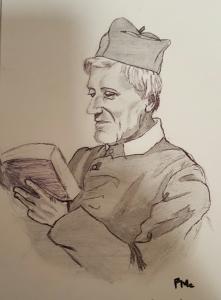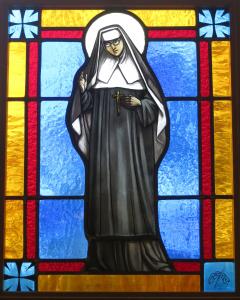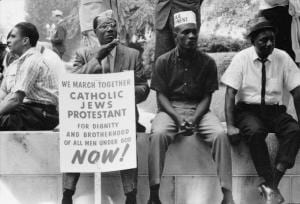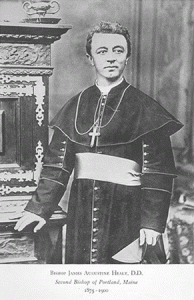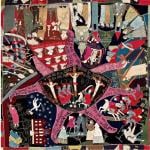John Howard Griffin (June 16, 1920 – September 9, 1980) was an American journalist and author much of whose writing was about racial equality. A white man, he is best known for darkening his skin and journeying through Louisiana, Mississippi, Alabama, and Georgia to experience segregation in the Deep South in 1959. He wrote about the experience in his 1961 book Black Like Me. Griffin was born in Dallas, Texas on July 16, 1920 to John Walter Griffin and Lena May Griffin, née Young. Awarded a scholarship, he studied French and literature at the University of Poitiers and medicine at the École de Médecine. At 19, he worked as a medic in the French Resistance army, where he was in charge of a psychiatric hospital. He then served 39 months stationed in the South Pacific in the United States Army Air Corps. He spent a year in 1943-44 as the only white person on one of the Solomon Islands, where he was assigned to study the local culture; he even went so far as to marry. His biographer says he had to learn “the Floridian dialect”, which would place his stay in the Florida or Nggela Islands, just north of Guadalcanal, where a significant campaign had taken just place in 1942-43. His 1957 novel Nuni is a semi-autobiographical work that draws heavily on his year “marooned” on the tropical island, and shows an interest in ethnography that he followed more fully in Black Like Me.
Later in his service, he was decorated for bravery. As a result of an accident during his service in the United States Air Force, he went blind; during this decade of darkness from 1947-57 he wrote. He returned to Texas and taught piano, marrying one of his pupils. He later regained his vision, becoming an accomplished photographic artist. His experiences in losing and regaining sight have been posthumously published as Scattered Shadows: A Memoir of Blindness and Vision. Griffin converted to Catholicism in 1952 and became a Third Order Carmelite. He was also a lifelong Democrat. In the fall of 1959, Griffin determined to investigate the plight of African-Americans in the South firsthand. He consulted a New Orleans dermatologist, who prescribed a course of drugs, sunlamp treatments, and skin creams. Griffin also shaved his head so as not to reveal his straight hair. He spent several weeks as a black man in New Orleans and parts of Mississippi (with side trips to Alabama and Georgia), traveling mainly by bus and hitch-hiking. His resultant memoir, Black Like Me, became a best seller in 1961. The book described in detail the problems a black man encountered in the South meeting simple needs such as finding food, shelter, and toilet facilities. Griffin also described the hatred he often felt from white people he encountered in his daily life – shop clerks, ticket sellers, bus drivers, etc. Griffin was particularly shocked by the extent to which white men displayed curiosity about his sexual life. The tale was tempered with some anecdotes of whites who were relatively friendly and helpful.
After the publication of Black Like Me, Griffin became a national celebrity for a time. In a 1975 essay included in later editions of the book, Griffin described the hostility and threats to himself and his family which emerged in his Texas hometown. He eventually was forced to move.
Throughout his life, Griffin lectured and wrote on race relations and social justice. Griffin was awarded the Pacem in Terris Award, named after a 1963 encyclical letter by Pope John XXIII that calls upon all people of good will to secure peace among all nations. Pacem in Terris is Latin for “Peace on Earth.” In later years, Griffin focused much of his work on researching his friend Thomas Merton, the American Trappist monk and spiritual writer. Griffin was the original selection by Merton’s estate to write the authorized biography of Merton. While Griffin’s health prevented him from completing this project, his more finished portion of the biography, on Merton’s later years, was posthumously published in 1983 as Follow the Ecstasy: Thomas Merton, the Hermitage Years, 1965-1968. He died on September 9, 1980 due to diabetes and/or several other health problems, but not skin cancer or other complications of his skin darkening, as some believe.
Later in his service, he was decorated for bravery. As a result of an accident during his service in the United States Air Force, he went blind; during this decade of darkness from 1947-57 he wrote. He returned to Texas and taught piano, marrying one of his pupils. He later regained his vision, becoming an accomplished photographic artist. His experiences in losing and regaining sight have been posthumously published as Scattered Shadows: A Memoir of Blindness and Vision. Griffin converted to Catholicism in 1952 and became a Third Order Carmelite. He was also a lifelong Democrat. In the fall of 1959, Griffin determined to investigate the plight of African-Americans in the South firsthand. He consulted a New Orleans dermatologist, who prescribed a course of drugs, sunlamp treatments, and skin creams. Griffin also shaved his head so as not to reveal his straight hair. He spent several weeks as a black man in New Orleans and parts of Mississippi (with side trips to Alabama and Georgia), traveling mainly by bus and hitch-hiking. His resultant memoir, Black Like Me, became a best seller in 1961. The book described in detail the problems a black man encountered in the South meeting simple needs such as finding food, shelter, and toilet facilities. Griffin also described the hatred he often felt from white people he encountered in his daily life – shop clerks, ticket sellers, bus drivers, etc. Griffin was particularly shocked by the extent to which white men displayed curiosity about his sexual life. The tale was tempered with some anecdotes of whites who were relatively friendly and helpful.
After the publication of Black Like Me, Griffin became a national celebrity for a time. In a 1975 essay included in later editions of the book, Griffin described the hostility and threats to himself and his family which emerged in his Texas hometown. He eventually was forced to move.
Throughout his life, Griffin lectured and wrote on race relations and social justice. Griffin was awarded the Pacem in Terris Award, named after a 1963 encyclical letter by Pope John XXIII that calls upon all people of good will to secure peace among all nations. Pacem in Terris is Latin for “Peace on Earth.” In later years, Griffin focused much of his work on researching his friend Thomas Merton, the American Trappist monk and spiritual writer. Griffin was the original selection by Merton’s estate to write the authorized biography of Merton. While Griffin’s health prevented him from completing this project, his more finished portion of the biography, on Merton’s later years, was posthumously published in 1983 as Follow the Ecstasy: Thomas Merton, the Hermitage Years, 1965-1968. He died on September 9, 1980 due to diabetes and/or several other health problems, but not skin cancer or other complications of his skin darkening, as some believe.



